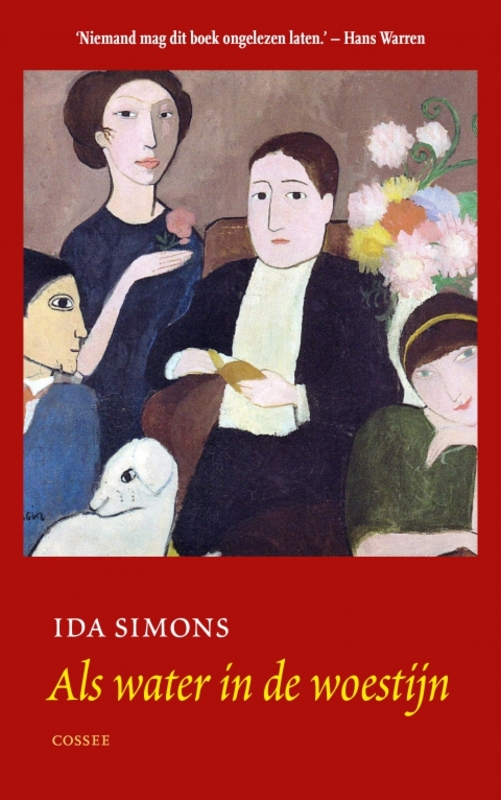
In Like Water in the Desert, the charming, vulnerable world of the young girl Gittel, whom we have met in Ida Simons' A Foolish Virgin, is again very present. Ida Simons creates an irresistible alter ego, but an adult one this time.
Liza Miller wants to be a fashion designer even though she is stuck trying to sell tickets to a charity event door to door. This is how she meets the Raidings: a successful, extremely rich and somewhat unworldly family. After a piece of daring but well-aimed fashion advice to the mother of the family – Liza is adopted into their eccentric circles.
She starts to write regularly for fashion magazines, and the family notices her talent. ‘Write a book about us, the Raidings,’ the household's father encourages her. ‘A book that shows the privilege of getting to know us. Posterity will be grateful for a good eyewitness report.’
Liza suddenly dies while only having completed the first few chapters. Daniel feels defeated but he is confident in Liza’s gift and composes a triptych, including her chapters. A kaleidoscope of stories arises, which shows us the youth of Liza, the odd Raidings family and a selection of colourful characters. Light and humorous like A Foolish Virgin, but with sharp edges and an undeniable touch of irony, Simons again proves her extraordinary talent.
Ida Simons wrote Like Water in the Desert as if she felt her end approaching: in fragments, but together a whole. The author died before the completion of this work.
‘Like Water in the Desert is one of the best recent Dutch books and the posthumous proof that Ida Simons was developing as one of our most important prose writers. A Foolish Virgin is surpassed by the novel design and the stories in Like Water in the Desert. One only gets to read a new work of this high quality once in so many years. Nobody who is interested in literature can leave Like Water in the Desert unread.’ – Hans Warren, Letterkundige Kroniek (1961)